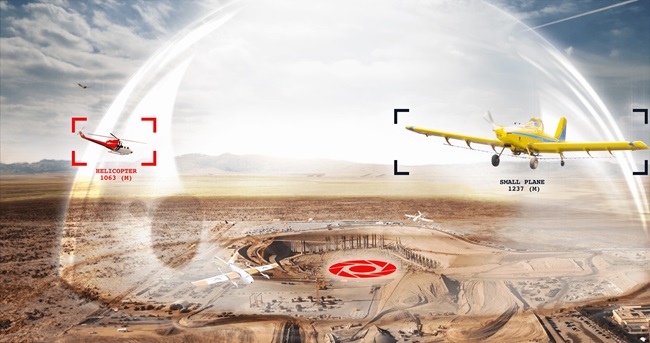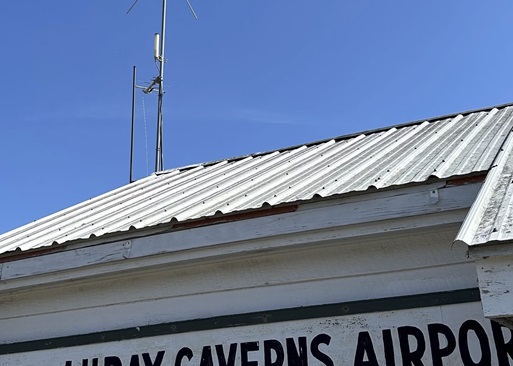ADS-B: FAA’s ADS-B rebate returns
Nearly 9,800 aircraft owners could pocket $500

ADS-B uses satellites instead of ground-based radar to determine aircraft location, and it is a key technology behind the FAA’s Next Generation Air Transportation System. The FAA has mandated ADS-B Out after January 1, 2020, for flight in airspace where a transponder is required today.
“The ADS-B mandate is not going away,” FAA Acting Administrator Dan Elwell said in a press release relaunching the rebate. “We are about 15 months from the January 1, 2020, deadline and now is the time for aircraft owners to equip.”
The original rebate program opened September 19, 2016, and expired 12 months later; only about 10,200 of 20,000 rebates were claimed. The new rebate program follows the same rules and procedures, and the FAA said 9,792 rebates are available—which appears to be the unclaimed balance from the first round.
The rebate is available to owners of fixed-wing, single-engine piston aircraft first registered before January 1, 2016, who equip with TSOed ADS-B Out hardware. Twins, helicopters, and turbine-powered airplanes are not eligible—but Experimental and Light Sport aircraft are, if their owners equip with TSOed hardware. If you equipped with ADS-B Out before October 12—sorry, you’re not eligible, either.
“The ADS-B mandate is not going away. We are about 15 months from the January 1, 2020, deadline and now is the time for aircraft owners to equip.” —FAA Acting Administrator Dan ElwellRebate reservations must be made online, and only within 90 days of installation. Within 60 days of installation, the aircraft must fly for at least 30 minutes in FAR 91.225 rule airspace, with at least 10 aggregate minutes of maneuvering flight.
The FAA website outlines the rebate’s five-step process. First, select the equipment you wish to purchase and schedule its installation. Second, reserve your rebate online; obtain and keep the Rebate Reservation Code. Third, have the equipment installed. Fourth, fly according to the rebate program rules, successfully validate equipment performance, and receive a GA Incentive Rebate Status Incentive Code. Finally, go online and use your Rebate Reservation Code and GAIRS Code to claim the rebate.
Have your ADS-B installation scheduled before you reserve a rebate. The reservation form will ask you to enter an installation date, a maximum of 90 days in the future (hint: request the latest installation date possible, in case there’s an unexpected delay with your install). Then, you have 60 days to finish the installation and pass the validation flight check. If that time period—150 days maximum, if you selected the latest possible installation date—ends without claiming a rebate, the application automatically expires.
Some aircraft owners reported frustration with the performance validation step during the original rebate program. There were several reasons for this. One of the biggest is the change in procedures required for ADS-B Out—in pretty much every case with ADS-B, the transponder should be turned to the Altitude (ALT) position as soon as the avionics are powered up. If you wait to turn the transponder to ALT when you taxi onto the runway for takeoff, the equipment will still be configuring itself as you take off—and you will fail the performance monitor evaluation.
After completing the process, rebate checks seem to be delivered promptly.For rebate validation, the aircraft must be flown in FAR 91.225 for a minimum of 30 minutes, with at least 10 aggregate minutes of maneuvering flight. For most of us, this means within or above Class C airspace; within the 30-nautical-mile Mode C veil around a Class B primary airport; or above 10,000 feet msl. If you have seen the flight test profile in AC 20-165B, ignore it; combined with your normal climbs and descents, a 360-degree turn in each direction—perhaps repeated at a different altitude—will fulfill the maneuvering requirement. (In Alaska, Guam, Hawaii, and Puerto Rico, flying above 10,000 feet msl and within FAA ADS-B ground station coverage meets the rebate requirement.)
Failure of an ADS-B Performance Monitor parameter means you may have to fix the issue and fly again before you can claim your rebate. If any parameter fails 100 percent of the time, there is a problem with the hardware’s setup or configuration. But a failure rate of 1 to 2 percent is a nuisance failure, and slight modifications to the flight profile can help you get the clean report you need to qualify for the rebate.
To minimize the chance of a nuisance failure during your rebate validation flight, AOPA recommends following this checklist, suggested during the initial rebate period by Bill Stone, Garmin International’s senior business development manager.
- Move the aircraft clear of any hangars or other obstructions before starting, so its antennas have a clear view of the GPS satellite constellation. Starting between hangar rows can complicate satellite acquisition.
- Wait at least two minutes after powering up the avionics before moving the aircraft, to assure that the GPS has acquired enough satellites.
- Taxi slowly to the runway. (Remember the “brisk walk” from your student pilot manual?)
- Take off, climb, and perform some normal maneuvers—not abruptly, just nice and gentle. Avoid steep turns and aerobatics. Fly for at least 30 minutes in FAR 91.225 rule airspace.
- After a normal pattern and landing, come to a complete stop on the runway. If you’re landing at a towered airport, advise the controller—they’re generally accommodating. Then, taxi slowly to the ramp or your hangar and shut down.
After your flight, wait at least half an hour before requesting your performance report through the link on the rebate program page (https://adsbrebate.faa.gov/PAPRRequest.aspx). It’s the same Public ADS-B Performance Report generated by the FAA’s ADS-B Performance Monitor, but requesting it from this link ensures that you also receive your GAIRS Code—required to claim your rebate. If you do fail, email the FAA and request a review of your flight before taking further action.
After completing the process, rebate checks seem to be delivered promptly. Most recipients report receiving their checks within two weeks of the validation step.
Members who experience difficulty passing the validation flight are encouraged to call AOPA’s Pilot Information Center, where the staff is prepared to assist. Although it’s not required by the FARs, once you receive a passing report from the ADS-B Performance Monitor, AOPA recommends that you print out a copy and keep it with your aircraft maintenance logs for future reference.
Email [email protected]



